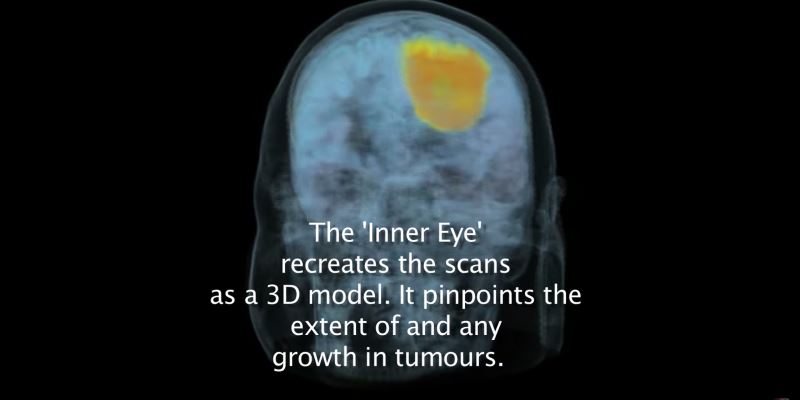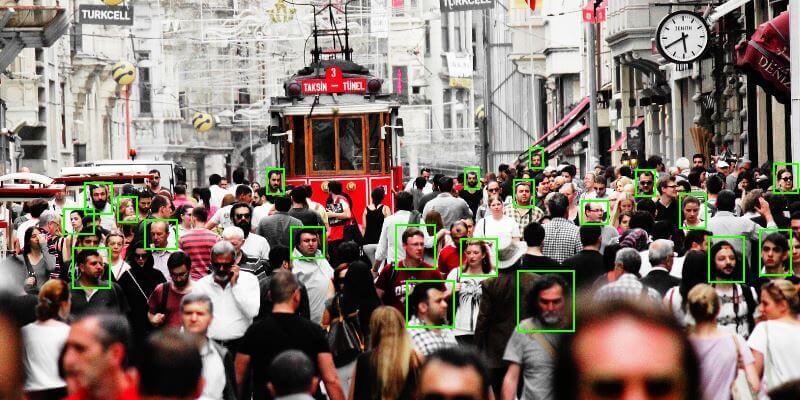
Technologies continue to transform the world around us.
With or without knowing it, you have experienced technology in any number of ways to make businesses grow. Self-driven cars, automatically added tags to photos on Facebook and Google Photos, GPS applications, Intelligent Chatbots, Next-generation news feeds and other technologies are dramatically changing our life to make it the better place.
The point of our today’s article – computer vision. We will describe the possibilities to use computer vision for business or in various industries and ways. Interested? Stay tuned!
WHAT IS COMPUTER VISION BUSINESS SOLUTIONS IN 2021
Computer vision is the field of computer science that describes how computers process digital images or videos to gain high-level understanding. Usually, we can use the data achieved after the image and videos procession for machine learning to make artificial neural networks understand the data that is around them. In general, that technology is very close to the way the human process and analyze visual information.
In fact, Computer vision (also known as CV) is a field of Artificial Intelligence (AI).
As we all know, AI is an area of computer science that is dedicated to making computers cognitive tasks intrinsic only to humans, such as learning, reasoning, decision-making, natural language processing and others. It is fashionable nowadays and AI popularity has grown since 2012. In that sense, Computer Vision aims at enabling computers to receive, analyze, and decide upon visual data. That visual data can be not only everyday photos or videos, but also images from sensor devices and detectors.
Here is the question: what are the benefits of computer vision?
It’s still a debatable topic whether or not science should progress for the sake of humanity or for science itself. However, computer vision for business is not just a whim of the tech-savvy people, as it has been successfully applied in various fields. On the consumer level, probably the most well-known CV applications are self-driving cars and sophisticated drones. The technology hasn’t stopped on this, and its use can be found around many distinct industries.
In fact, computer vision is useless as the stand-alone technology, but extremely useful as the part of something big. There are many ways businesses may benefit from computer vision.
For example, we can use following computer vision features:
- Document scanning
- Video Surveillance Systems
- Augmented Reality
- Robotics
- so many others products
The software products that use computer vision as the component we can apply in various industries: agriculture, security, healthcare.
Let’s have a closer look at what the technology is about and how it is transforming many things around us.
The critical question: How can it help real business in the industries mentioned above? Let’s discover!
COMPUTER VISION FOR AGRICULTURE
To tell the truth, the technologies that use computer vision may significantly improve agricultural business. Growers face with the uprising challenge, as it becomes more and more difficult to manage weeds. Due to the excessive and continuous use of herbicides, plants sooner or later become resistant. Now, the number of weed species that have evolved resistance to herbicides is increasingly alarming.
Luckily, technology is there for us to help combat the problem.
Blue River Technology company introduced the spraying system based on AI, computer vision, and robotics back in 2015. The system identifies and distinguishes between weeds and crops, and hits the former with herbicides and feeds the latter with fertilizers.
The benefits for agricultural business are vivid – by replacing broadcast spraying with targeted controls, such a system eliminates 90% of the chemicals producers use.
Why is this important? Nowadays we have an unusual situation in the Agricultural Industry and Food Industry – food is becoming cheaper from year to year. This situation occurs due to technological growth. In fact, in recent years scientists discovered the vast number of different chemicals and pesticides that are safe for humans and can help to grow the more significant amounts of food in the short term. These chemicals helped to cut production costs significantly.
There are two ways to develop the business in the agricultural industry:
- Grow “eco” food
- Decrease the food production costs to grow more “usual” food
Each of those approaches has both pros and cons. Not to explain the main points of every approach, we should say that new technologies help growers to improve the production process.
For example, the spraying machine mentioned above 90% lowers herbicide costs when selectively applying herbicide to weeds only.
Sounds fantastic, right? Can we implement this technology without computer vision? Mostly not.
COMPUTER VISION TO MANAGE PAPER DOCUMENTS
In the past, companies had all their documents primarily in paper form. Valuable insights are hidden in this considerable amount of data. Having docs in digital format is a crucial thing for businesses, as it allows for convenient storage, management, and retrieval.
But to make it all possible, data must first be transformed into machine-readable form. And this can be done by software enhanced with Optical Character Recognition.
Optical character recognition (OCR) is a branch of Computer Vision. So its primary goal is to enable a computer to recognize the letters of the scanned document.
A simplified model of how optical character recognition is performed.

The technology can be used by all types of organizations, regardless of their domain. Most often, OCR software is used by healthcare companies, insurance companies, law firms, in banking and finance; mainly in every documentation-intensive field.
COMPUTER VISION IN VIDEO SURVEILLANCE SYSTEMS
The business related to the security industry may use Computer Vision: to ensure security at the public places. There are lots of cameras in public areas. Sometimes they appear of great help to law enforcement officials to identify suspects.
Computer vision can provide a new level of control. It’s possible to build software which analyses the real-time video stream and recognizes the objects and people around.
In China, for example, the scale of surveillance is growing even more than that. Chinese authorities elaborated a plan called “Sharp Eyes”. It is intended to create a nationwide surveillance network enhanced with facial recognition. The system envisages keeping citizens under surveillance over public cameras, as well as over their smartphones and smart devices at home. Just have a look at how impressively the system already works:
But not only law enforcement can take advantage of enhanced video surveillance. Many companies and government institutions may be willing to adopt similar systems with facial recognition features as well. That would help them to check who and when entered the building in the most convenient way possible.
COMPUTER VISION IN HEALTHCARE
For healthcare companies, Artificial Intelligence is paving its way from decision support to the full diagnosis. And computer vision has enormous potential to assist here.
For more precise detection and diagnosis we have to use medical image data. The body can be analyzed from the micro level, such as cells, and tissues, to the organs. For example, this scan is designed to aid tumor detection:

The Inner Eye is an excellent software product. It helps neurologists and neurosurgeons to diagnose cancer more accurately. Moreover, the Inner Eye reduced the time needed to diagnose the tumor from 40 minutes to 50 seconds. It’s more than 40 times! In fact, with the help of computer vision, neurologists can consult a more considerable number of patients, that leads to the higher diagnosis rate, and in the long term increase the lifespan.
СONCLUSION
Yeah, we can see the successful implementation of computer vision business solutions in many industries.
Are there any difficulties in implementing computer vision in the new, uncovered industry? Unfortunately, the most common problem – the lack of data to train models for CV systems. Hopefully, there is a solution for it. It is open source.
The amount of visual data is growing each day at an unprecedented speed. Approximately 3 billion photos and videos people share online every day. Basically, the most significant photo databases are Google Images and Instagram, video-hosting is YouTube. Such open data sources help researchers and developers to train neural networks and improve machine learning algorithms. They find the ways to implement their knowledge to make our world a better place. It would be just very unwise not to make use of the open data sources.
However, wait, where is the correlation between data sources, the business needs, and computer vision?
Modern businesses want to improve their peculiar goals with the latest technologies. It is not enough to specify that goal. Even if we have a clear understanding of the exact business concern, we, as the software development company, probably won’t be able to propose the optimal solution without the specific data. Ten years ago we requested the data from the customer. It was the pain point for us. No one provides sensitive data to the third-party vendor. Nowadays, in most cases, we may find the dummy data on the Internet. Moreover, test most of the hypotheses we have.
So, if you need to develop computer vision applications or improve your current business processes with computer vision – it is easy to start.
Well, to be honest, computer vision for the business is not so expensive as it was several years ago. It has become cheaper due to the opensource technologies and open data sources mentioned above. Do you need MVP, proof-of-concept or computer vision consulting services? It is not the problem! Specialists can build Computer Vision prototypes from scratch in the short term.
If there is a way to delegate routine business processes to a machine, so the people will get rid of them. Therefore, we think that further development and introduction of Computer Vision around industries and businesses is vital and inescapable.
Azati team have developed several prototypes and products based on Computer Vision:
If you want to learn more – drop us a line.

